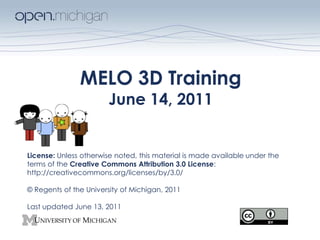This document outlines a training session on using openly licensed educational resources (OER) in teaching, emphasizing their importance for accessibility and knowledge sharing. It explains the types of OER available, the copyright implications, and provides guidelines for instructors on clearing materials of copyrighted content. The presentation also encourages a culture of collaboration and adaptation in educational settings through the use of licenses like Creative Commons.














































